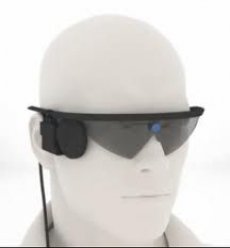New publications
Clinical trials of the artificial retina have been successful
Last reviewed: 01.07.2025

All iLive content is medically reviewed or fact checked to ensure as much factual accuracy as possible.
We have strict sourcing guidelines and only link to reputable media sites, academic research institutions and, whenever possible, medically peer reviewed studies. Note that the numbers in parentheses ([1], [2], etc.) are clickable links to these studies.
If you feel that any of our content is inaccurate, out-of-date, or otherwise questionable, please select it and press Ctrl + Enter.

Having received approval to operate in Europe, Second Sight, the developer of the Argus II (Greek for hundred-eyed) retinal replacement, has published interim results from international clinical trials in blind patients with retinitis pigmentosa, a group of genetically determined degenerative eye diseases that lead to incurable blindness.
Argus II uses a tiny camera in the patient's glasses to convert the image into a series of short electrical pulses that are transmitted to a set of electrodes placed on the surface of the retina. These pulses stimulate the remaining unaffected cells of the retina to send signals along the optic nerve to the brain. Depending on which electrode sends a signal to the retina, the brain receives either a light or dark spot.
In clinical trials, 30 patients, observed for six months to two and a half years or more, underwent several visual acuity tests, including localizing squares, determining the direction of a moving object, and the well-known letter chart. In addition, two special tests were developed - for orientation and mobility in real-world conditions. In particular, it was necessary to find a door on the other side of an unknown room and follow an indirect white line on the floor.
The results, published in the journal Ophthalmology, show significant improvements in the performance of orientation and movement tasks in the "external environment." The indicators for localizing moving objects increased by 96%, for recognizing movement - by 57%, for vision testing tables - by 23%.
Second Sight says the test results demonstrate the reliability and effectiveness of the Argus II and suggest that the device's safety profile is "at a level comparable to standard, existing ophthalmic devices and procedures."
"Argus II, in simple terms, can help the blind see," said Dr. Stanislao Rizzo, director of the Ophthalmic Surgery Center at the University Hospital of Pisa (he was the first in Europe to implant Argus II in October 2011). "Now that we have clinical data, there is hope for patients suffering from retinitis pigmentosa. Their vision can be partially restored, without any additional risk."
 [ 1 ]
[ 1 ]
